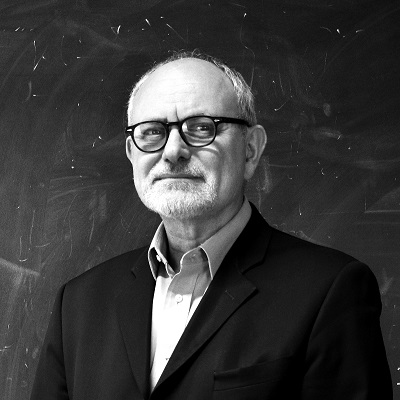Topics in Applied Public Economics: Healthcare
Enseignant
GARY-BOBO Robert
Département : Economics
Crédits ECTS :
4
Heures de cours :
24
Heures de TD :
0
Langue :
Anglais
Modalité d'examen :
mém.
Objectif
This is based on recently published research papers focussing on a particular theme in Public Economics. Papers will be empirical or theoretical. We propose in 2023-2024 to focus on the economics of hospitals. An important theme in Health Economics that recently came to prominence. Everywhere in the world, hospitals pose interesting and specific problems, both in Economic Theory (in particular, Industrial Organization; Optimal Regulation, Incentives and Public Finance) and Applied Econometrics.
HOSPITALS
We study some important themes related to hospitals, with empirical and theoretical articles published in international journals. We focus on three countries: France, the UK and the United States. The goal of the course is to study some recent papers in depth.
Plan
I. Theme 1. Competition among Hospitals.
A. The UK and the NHS reform.
1. Gaynor, Martin, Moreno-Serra, Rodrigo, and Carol Propper (2013), “Death by Market Power: Reform, Competition, and Patient Outcomes in the National Health Service”, American Economic Journal: Economic Policy, 5(4), 134-166.
2. Cooper, Zack, Gibbons, Stephen, Jones, Simon and Alistair McGuire (2011), “Does Hospital Competition Save Lives? Evidence from the English NHS patient Choice Reforms”, Economic Journal, 121, F228-F260.
B. The United States, Medicare and HMOs.
3. Kessler, Daniel P. and Mark B. McClellan (2000), “Is Hospital Competition Socially Wasteful?”, Quarterly Journal of Economics, 115(2), 577-615.
4. Chandra, Amitabh, Finkelstein, Amy, Sacarny, Adam, and Chad Syverson (2016), “Health Care Exceptionalism? Performance and Allocation in the US Health Care Sector”, American Economic Review, 106(8), 2110-2144.
2. Theme 2. Regulation, Incentives, and Non-Profit Hospitals vs. For-Profit Hospitals.
A. The Soft Budget Constraint Problem.
5. Duggan, Mark, (2000), “Hospital Ownership and Public Medical Spending”, Quarterly Journal of Economics, 115(4), 1343-1373.
Duggan, Mark (2002), “Hospital Market Structure and the Behavior of Not-for-Profit Hospitals”, Rand Journal of Economics, 33(3), 433-446.
B. Nursing Homes and Ownership Conversions.
7. Grabowski, David C., Feng Zhanlian, Hirth Richard, Rahman Momotazur and Vincent Mor (2013), “Effect of Nursing Home Ownership on the Quality of Post-Acute Care: An Instrumental Variables Approach”, Journal of Health Economics, 32, 12-21.
8. Lu, Lauren Xiaoyuan and Lu, Sunsan Feng (2022), “Does Nonprofit Ownership Matter for Firm Performance? Financial Distress and Ownership Conversion of Nursing Homes”, Management Science, 68(7), 5127-5145.
C. Incentives and Teams in Health Care.
9. Fortin Bernard, Jacquemet, Nicolas, and Bruce Shearer (2021), “Labour Supply, Service Intensity and Contracts: Theory and Evidence on Physicians”, Journal of Applied Econometrics, 36, 686-702.
10. Chen, Yiqun (2021), “Team-Specific Human Capital and Team Performance: Evidence from Doctors”, American Economic Review, 111(12), 3923-3962.
D. Healthcare Quality, Efficiency and Social Consequences.
11. Knutsson, Daniel, and Björn Tyrefors (2022), “The Quality and Efficiency of Public and Private Firms: Evidence from Ambulance Services”, Quaterly Journal of Economics, 137(4), 2213-2262.
12. Dobkin, Carlos, Finkelstein, Amy, Kluender, Raymond and Matthew J. Notowidigdo (2018), “The Economic Consequences of Hospital Admissions”, American Economic Review, 108(2), 308-352.
Références
3. Background references.
Besley, Timothy and James M. Malcomson (2018), “Competition in Public Service Provision: The Role of Not-for-Profit Providers”, Journal of Public Economics, 162, 158-172.
Choné, Philippe and Lionel Wilner (2020), “Financial Incentives and Competitive Pressure: The Case of the Hospital Industry”, CEPR Discussion Paper 14328(v.2), CEPR, London, UK.
Gaynor, Martin, Ho, Kate and Robert J. Town (2015), “The Industrial Organization of Health-Care Markets”, Journal of Economic Literature, 53(2), 235-284.
Gaynor, Martin and Robert J. Town (2012), “Competition in Health Care Markets”, Chapter 9 in Handbook of Health Economics, volume 2, Elsevier, Amsterdam.
Glaeser, Edward L. and Andrei Shleifer (2001), “Not-for-Profit Entrepreneurs”, Journal of Public Economics, 81, 99-105.
Juven, Pierre-André (2016), Une santé qui compte ? Les coûts et les tarifs de l’hôpital public, série Partage du savoir, PUF, Paris.
Kornai Janos, Maskin, Eric and Gérard Roland (2003), “Understanding the Soft Budget Constraint”, Journal of Economic Literature, 41(4), 1095-1136.
Lakdawalla, Darius and Tomas Philipson (2006), “The Nonprofit Sector and Industry Performance”, Journal of Public Economics, 90, 1681-1698.
Ma, Ching-To Albert (1994), “Health Care Payment Systems: Cost and Quality Incentives”, Journal of Economics and Management Strategy, 3(1), 93-112.
Mougeot, Michel et Florence Naegelen (2014), « La tarification à l’activité : une réforme dénaturée du fonctionnement des hôpitaux », Revue française d’économie, 29, 111-141.
Newhouse, James P. (1970), “Toward a Theory of Nonprofit Institutions: An Economic Model of a Hospital”, American Economic Review, 60(1), 64-74.
Sloan, Frank A. and Chee-Ruey Hsieh (2016), Health Economics, second edition, MIT Press, Cambridge, Massachusetts.
Weisbrod, Burton A. (1988), The Nonprofit Economy, Harvard University Press, Cambridge, Massachusetts.










